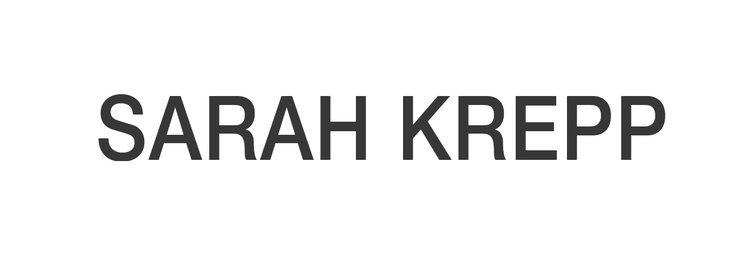Sarah Krepp still recalls her surprise as a child at seeing how Seurat's Sunday Afternoon on the Island of La Grande Jatte changed as she got nearer to it. Now her own work, which looks smooth and flat from a distance, breaks up into seemingly countless details once you're close. Her mixed-media pieces at Roy Boyd include photographs, rolled-up bits of paper, pieces of tire treads, and painted or drawn "texts" in a panoply of symbolic systems: braille, Morse code, eye charts, sheet music, engineering diagrams. A year and a half ago, disturbed by the Iraq war, Krepp began to include DNA diagrams--a sign of what she calls the "fragility of our bodies"--among her other symbols. Fragments of cautionary road signs seem a warning against hubris. She stitched the torn-up pages of an entire dictionary into the large diptych White Noise: Red (Read) Silence as a way of "challenging the power of language," she says. White Noise: Sea Song I and II both set a photograph of Lake Michigan, overlaid with a grid of lines representing human alterations to nature, beneath a densely layered and painted field created from rolled-up diary pages, to-do lists, and jottings she made while listening to NPR.
These tactile, enigmatic pieces are the result, in part, of traumatic events in Krepp's life. In 1982, three years after finishing her MFA at the School of the Art Institute, she was painting works inspired by abstract expressionism and minimalism. Then her son was critically injured. Sixteen at the time, he was driving behind Krepp and her husband when a tanker truck crushed his car at an intersection. It took a technician an hour to cut him out of his car, which was lodged so deeply under the truck Krepp couldn't even see him. Though he lived, he required years of surgery and rehabilitation. Just before the accident, she'd been diagnosed with ovarian cancer and given a 10 percent chance of survival.
For two years Krepp made no art. Then, in 1984, she was driving with an artist friend when she saw a tire fragment beside the Kennedy. Long interested in gestural marks, she exclaimed, "This is mark made manifest, three-dimensional!" She stopped, loaded it into her truck, and began asking Illinois toll-road personnel to save tire treads for her, which they did, dubbing her "Our Lady of the Treads." Soon afterward she began an installation called Marked Time. Shown at ARC in 1985, it consisted of a false wall concealing a 9-by-20-foot heap of road debris, including tailpipes, pieces of tires, and the straps used to hold down cargo on trucks. The pile was also painted with a few black and yellow stripes to mimic road caution signs. Krepp says that, visually, after a visitor rounded the corner of the false wall, "all hell broke loose." She says this abstracted version of her son's car wreck invited the viewer to "walk my path." After that she painted an 18-foot-wide diptych that incorporated road detritus, trying to give a painting the power of her installation by adding actual materials.And that's the rub. Krepp's challenge is that she completely understands both the impossibility and the inevitability of language, that she is fascinated by what she instinctively mistrusts, that the only way to challenge text is with more text. Imagery gives her a respite—but does it? Sea/Saw, a multi-pieced installation, conflates images of the sea (this is Krepp's most aqueous exhibition, the metaphor of the sea— and it's pun with vision—is much on her mind, perhaps some gesture toward a primal site that exists beyond language) with things such as medical definition s of eye diseases, a cataract meeting a cataract. But puns are not what this is about; instead one senses a kind of awe in Krepp's immersions into language systems, that she is attracted to the communicative power of what she simultaneously fears and seeks to expose. It's a heady game, a tenuous balancing act, and Krepp's work begins to imply that the Rosetta Stone actually doesn't exist at all.
By the late 80s Krepp was a professor at the University of Illinois at Urbana-Champaign and in 1990 taught a summer course in Paris. She was still collecting odds and ends from the street but also began gathering maps and train schedules for possible trips. She started to use these printed materials in her art as well as found objects, which she wrapped in thread and displayed with photographs of the objects taken where she'd discovered them. By 1994 she was using the term "white noise"--a wide mix of frequencies--to describe the effect she wanted from her art: to capture the "complexities of [the] symbols that permeate our lives."
Fred Camper "Traces of Trauma", Chicago Reader, 2005.
